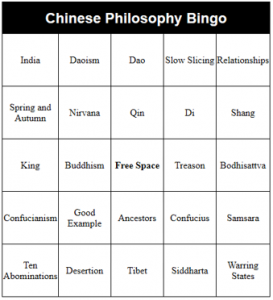Educators implement effective planning, instruction, assessment and reporting practices to create respectful, inclusive environments for student learning and development.
Everthing comes down to structure, that’s my philosophy. I begin my planning with a set of competencies and knowledge that I want students to acquire, then develop the outlines of a final summative task that will allow them to demonstrate these things. With the goals in place, it is time to plan the unit leading up the conclusions with which I have started, every lesson building on those previous to it as students build up their understanding and ability day by day. Ensuring that every lesson is connected to those that are temporally adjacent to it, and that all work towards a well-defined goal, makes every aspect of my job as a teacher run more smoothly. With the plan in place, and students advised of what to expect and what I expect of them well in advance, instruction is effective because all parties understand the goals, and why what we are doing is important. Thus assured that their time is not being wasted, classroom management issues are in most cases reduced to a manageable minimum. Assessments, too, are optimalized by being developed initially before and then alongside the lessons themselves–this process ensures that assessment tasks are fair in what they expect students to know and be able to do.
When teaching Secret Path during my final practicum, for example, I developed a journal for students to work through over the space of two weeks. The journal gave them a  space to record notes on what they had done and learned each day, a chance to reflect on the nature and legacies of the residential school system, and a place to begin thinking about their final project for the unit. This final project was a creative-artistic piece in a medium to be chosen by each individual student, informed by various types of media on the theme that they had explored and reflected on in their journals.
space to record notes on what they had done and learned each day, a chance to reflect on the nature and legacies of the residential school system, and a place to begin thinking about their final project for the unit. This final project was a creative-artistic piece in a medium to be chosen by each individual student, informed by various types of media on the theme that they had explored and reflected on in their journals.
Effective planning, of course, nevertheless requires more than structure alone–a system can easily become a rut, and it is important to keep things fresh. Regular classroom routines are good, and I find it useful to begin each class the same way (with current events, a word of the day, etc.) and for most classes to follow a broadly  similar structure that begins with content delivery and ends with students working autonomously. That said, student engagement is kept higher, and lessons therefore made more effective, if there is an element of fun or novelty to each class. Take part of a day to review by playing bingo with key concepts, intersperse collaborative and individual learning activities, share personal anecdotes as relevant and appropriate.
similar structure that begins with content delivery and ends with students working autonomously. That said, student engagement is kept higher, and lessons therefore made more effective, if there is an element of fun or novelty to each class. Take part of a day to review by playing bingo with key concepts, intersperse collaborative and individual learning activities, share personal anecdotes as relevant and appropriate.
The final element of effective instruction is mutual respect between teacher and students. On the teacher’s side, this means getting to know each student beyond just their name. I try to learn at least one noteworthy fact about each of my students in the first week–even if they are withdrawn, it’s a way to begin a conversation, or just show that you are interested in listening to them.
For the reporting side of assessment, I keep a paper record of all grades, with two digital backups. One of these backups is a master list of every assignment and mark for each student which is for my own reference and for reporting purposes. The other backup is for student benefit, and consists of individualized records of assignments submitted/outstanding, the mark for each, and current standing in the course. These individualized reports were distributed to students regularly during my long practicum to help students monitor their progress. Students who fell exceptionally far behind were asked to take home a progress report and bring it with a guardian’s signature, with an e-mail home for those who did not complete this task. In this way, I strive to keep all stakeholders up to date on student learning.
